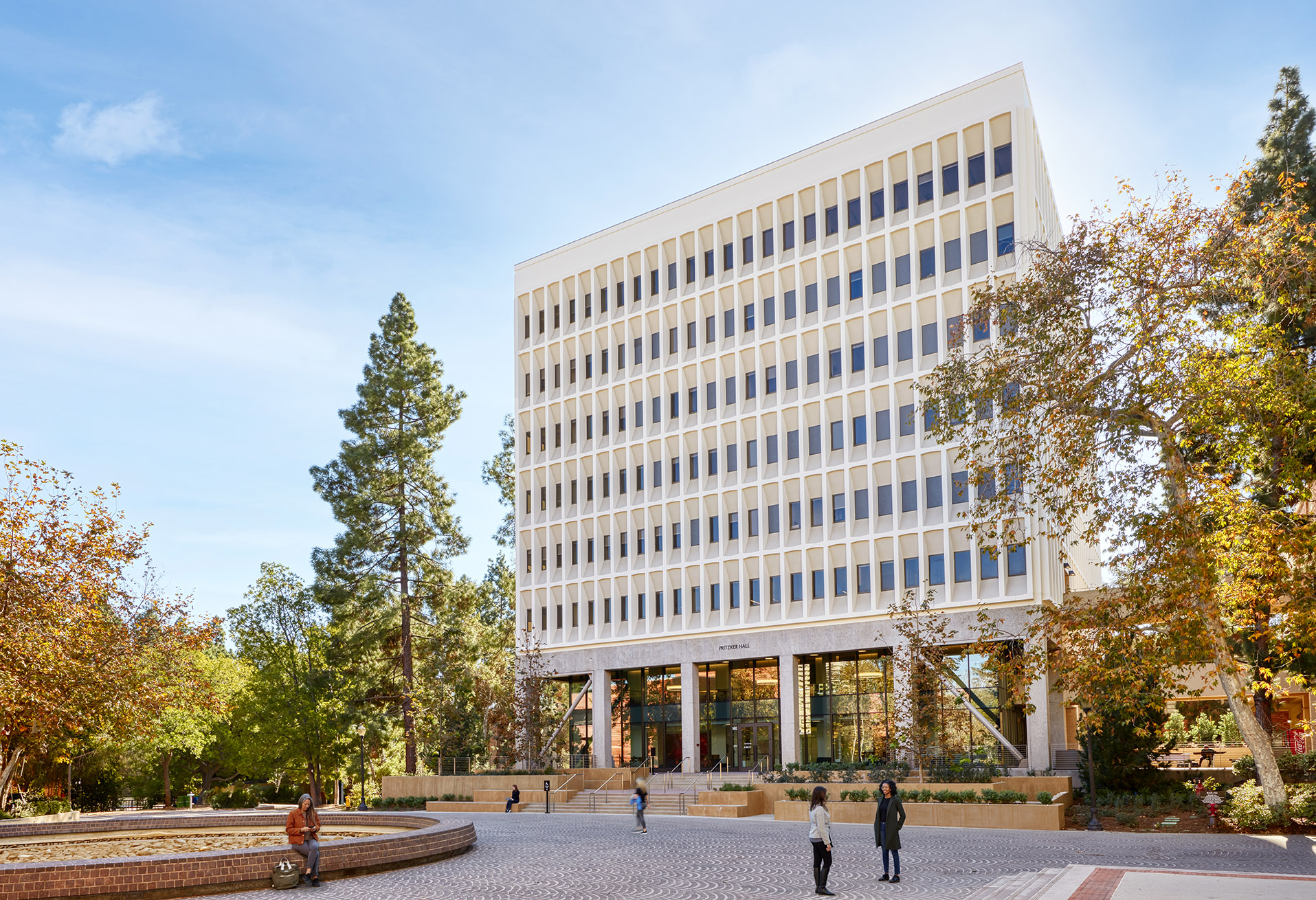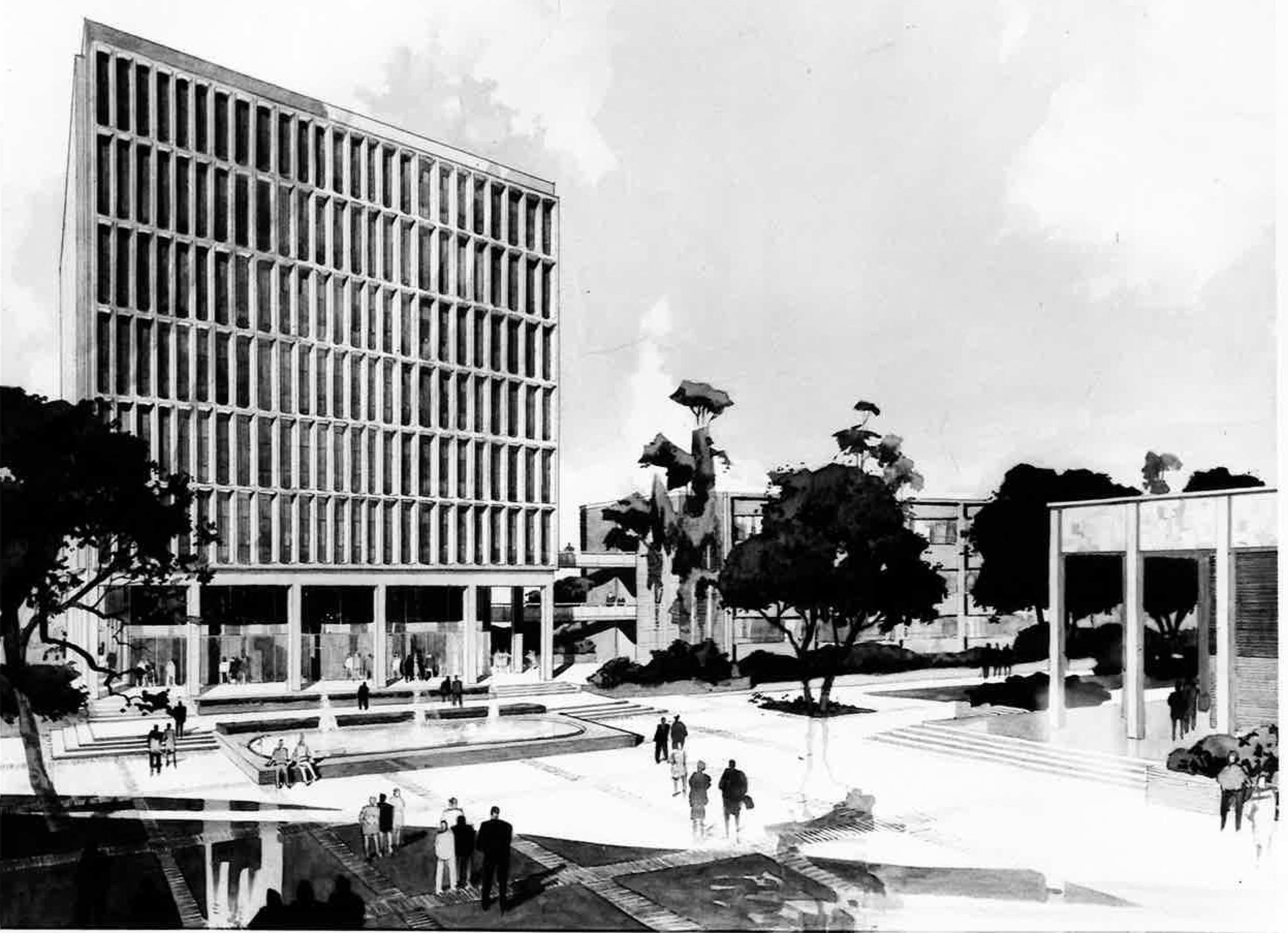- Architect
CO Architects - Location
Los Angeles, California - Completion Date
November 2020 - Construction Manager at Risk
Rudolph and Sletten - MEP Engineer and LEED Consulting
Affiliated Engineers (AEI) - Structural and Civil Engineering
KPFF Engineering - Landscape Architect
Studio-MLA - Lighting Designer
KGM Architectural Lighting - Historic Consultant
Page & Turnbull - Curtain Wall
Arcadia Windows - Insulated Glass Units
Viracon - Dampers
Taylor Devices
CO Architects’ renovation of architect Paul Revere Williams’ Pritzker Hall at University of California Los Angeles (UCLA) features an updated facade and seismic improvements. The 1967 building houses part of UCLA’s Psychology Department and rises 11 stories—three of which are below grade. Its cubic shape is formed by a structural concrete grid.
The University decided to renovate the building—formerly known as Franz Hall II and the Psychology Tower—upon discovering seismic deficiencies, and to accommodate the school’s growing psychology program. CO Architects had previously led the renovation of the campus’ 1929 Royce Hall.
CO associate principal Phillip White explained that UCLA “fortunately” saved Williams’ original plans of the building from the early 1960s. Prior to the renovation the architects visited a number of Williams’ other designs around Los Angeles, including the Beverly Hills Hotel and the Shrine Auditorium. White described how the design team took note of Williams’ form-follows-function designs, though, pointed out that the openings in Pritzker Hall’s five-story structural grid did not always correspond with windows, as they were not appropriate for certain research needs. Hence, the unified facade gave an illusion of uniformity across its four faces despite the more private, windowless interior spaces.


Williams designed the openings in the grid to include a modest curve at the top and bottom of the opening, with “angled cement-plaster headers and spandrels at each window, or a cement-plaster panel opening.” Bronze-anodized aluminum frames surrounded single pane, bronze-tinted windows, and the structural concrete was painted in brown and tan hues.
The post Paul Revere Williams’ UCLA building gets a refresh and retrofit from CO Architects appeared first on The Architect’s Newspaper.





